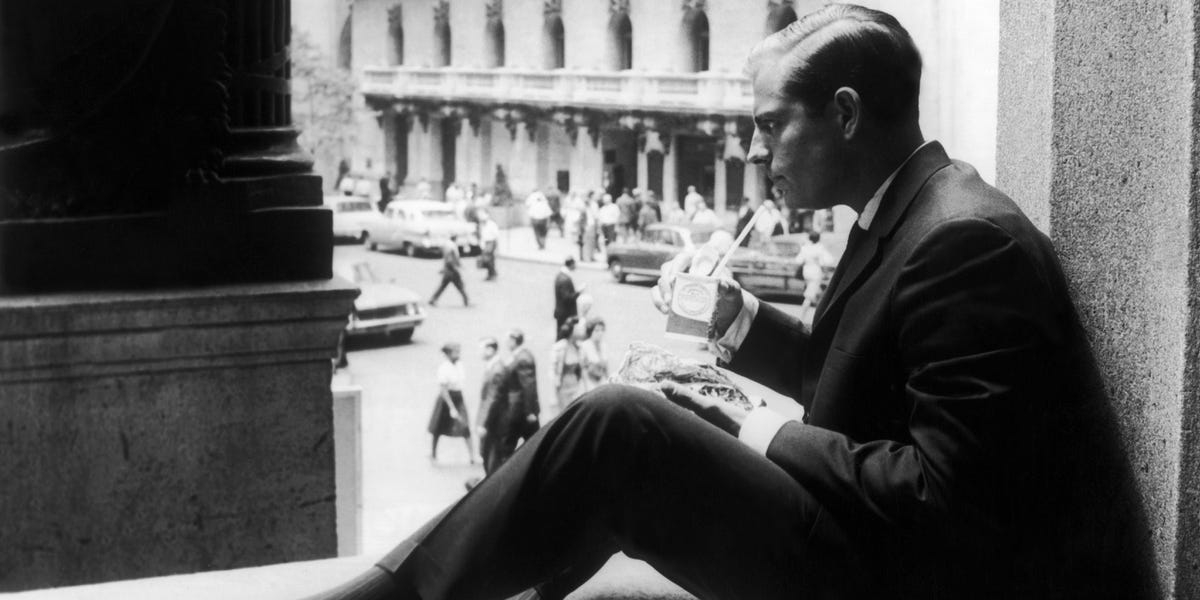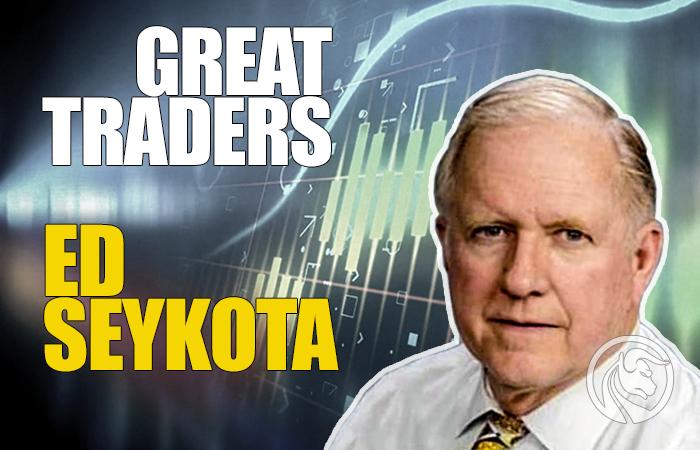Ed Seykota - a pioneer of automatic trading
Currently creating "Automatic investment strategies" is nothing special. This is due to technological progress and better education of investors in the capital market. However, 50 years ago, automated investing was unusual. One of the pioneers of automatic trading was the hero of today's article. Ed Seykota is one of the greatest traders in history. He was one of the first developers of an automatic trading system. Despite his great achievements, he belongs to the group of less known traders. As a rule, some investors associate the trader as one of the heroes of the book The Market Wizards.
Be sure to read: Jesse Livermore - The Phoenix among the speculators
The beginnings of a career
Ed Seykota is now 74 years old (he was born on August 7, 1946). After completing electrical engineering on MIT (MIT) Edward Seykota became an analyst in one of the well-known brokerage houses. Young Seykota's main task was preparing analyzes of the egg and broiler market.

Ed Seykot in his youth.
From the beginning of his work in a brokerage house, Ed was interested in mechanical transaction systems. Testing the strategy "on paper" was time-consuming, but the advancing computerization offered possibilities that were not possible before. However, it should be remembered that access to computers in the 70's was very limited. Such a device was usually owned by large companies. A computer was used in the brokerage house where Ed Seykota worked. However, the young analyst had very big problems to be able to take advantage of it. This resulted, inter alia, from from his little internship with the company. Another problem was the disputes with the company's Analysis Department, which forced the analyst to prepare reports that contradicted his perception of the market. This caused increasing frustration. As a result, he decided to quit his job after only a month of work. This was due to his conviction that he was wasting time in this company.
The next job was assistant position in a small brokerage house. The assistant's job was to change the paper in the Reuters terminal and post a message on the wall behind the terminal. It was not a prestigious job in which Ed Seykota could work, but the possibility of testing trading systems on an IBM 360 computer was a big advantage. It resulted from the friendly culture in the company. So it was a combination of uninteresting work with a hobby. Ed Seykota was enthusiastic about the tests. In just 6 months, he tested around 100 simple trend-following strategies (e.g. using the exponential mean). The strategies were tested on ten markets, and the tested strategy period was 10 years. After testing the mechanical systems that followed the trend, the trading results were satisfactory. It turned out that using only technical analysis can be an effective way to invest money in the stock market. These results motivated Ed to refine his investment strategies.
Self-employment
The satisfactory results of the strategy following the trend aroused the interest of the management board of the brokerage house "Modern methods" a chance for additional company profits. At the request of the superiors, the first algorithm for trading on the stock exchange was developed. This allowed the company to distinguish itself from the competition as it applied "Computer trading system". Although the created signal generated good trading results, the managers were not able to "Blindly" believe in the system. As a result, they acted on their own, which significantly worsened the system's performance. However, another problem Ed Seykota encountered was his superiors' request for the system "Generated" more transactions which would increase commission income. Ed Seykota believed that changes to the system would worsen the strategy's performance, which would be less beneficial to clients.
Seykota was constantly trying to improve its investment strategies and adapt them to his character. Ed has constantly evolved in creating a strategy to follow the trend. Part of his diligence was that it was a passion for him. As a result, the additional hours spent on testing were not tiring for him. Confident in the effectiveness of his strategies, Ed Seykota decided to quit his job at a brokerage house.
In the following years, Ed dealt with, inter alia, managing customer funds. The most famous are the years 1972 - 1988, when he converted $ 5 into $ 000 invested. The amount would be higher if the client did not pay out a part of the profits on the way. This phenomenal rate of return was certainly not a coincidence. So what does the trading system of this outstanding trader look like?
Ed Seykota: Trading System
Ed Seykota has always believed that long-term success in the marketplace requires the right approach to risk. Ed used to say:
“There are old and brave traders on the market. But very few are old and brave. "
Even the best investment strategy will not be successful if you invest too much or too little. In the first situation, the trader may not survive the capital slide period. Therefore, you should cut losses so that they do not wreak havoc on your wallet. Most often Ed used stop losses limiting the loss to a maximum of 5% of the portfolio value. On the other hand, the second situation (too low risk) will result in the investor not achieving a satisfactory rate of return due to his risk aversion.
Despite his immense mathematical knowledge, Ed Seykota preferred simplicity in his investment strategies. There was no room for "sophisticated" mathematical additions. The basic strategy was very simple as the trading signal was generated from the intersection of two moving averages. The use of averages resulted from drawing conclusions from the analyzes carried out by Richard Donchian. Due to good education (MIT graduate), Seykota carefully analyzed what the relationships between the two averages must be. He was of the opinion that the averages should not be for "close" periods (eg 20 and 25 averages) because too many signals were generated then.
Check it out: Donchian's Channel - Scaling the size of the item
Another activity used by Ed Seykota was the trend analysis. For this purpose was used Dow theory, which simply defined the trend in the market. If the rate set higher and higher highs and lows, there was an upward trend. As a result, only transactions in line with the trend were taken into account.
Ed Seykota had no problem accepting that he didn't know everything about the market. After a series of losses "He did not take offense at the market"only limited activity. Despite his "strict" education, he realized how important the psychological aspect is in investing.
Seykota was not much of a fan of fundamental analysis. He believed that the most important thing in his strategy was capital management and that the transaction should be in line with the prevailing market. Reluctance to do fundamental analysis meant that Ed did not have a "skewed" perspective due to the interpretation of "important" macroeconomic or financial information. He believed that fundamental data were already included in prices. For this reason, it is not necessary to waste time analyzing them. According to Seykota, he treated “common known” fundamental events as irrelevant "Funny-mentals".
Summation
According to Ed Seykota, the most important principles of speculation are:
- Always remember to cut losses - this is to prevent too much depletion of assets on the account;
- Let your profits grow - even the best strategy will not meet its assumptions if the trader does not allow the trend impulse to "spread its wings", this is especially true for medium to long-term strategies;
- Control your risk by playing with low stakes - excessively aggressive positioning may be the way to the top, but most often it leads to a "zeroing" of the account in the event of a negative scenario materializing;
- Stick to the set rules - if the strategy works, you should stick to it, it is especially important in periods when the strategy generates a series of losses, such period may convince the trader to "manipulate" the strategy;
- Learn when to deviate from the rules - this seems to contradict the previous point. However, it is sometimes necessary. For example, trend-following strategies tend to fail poorly during consolidation periods. Then it is worth "suspending" the operation of the strategy. Too mechanical approach to the adopted rules does not allow for the improvement of the system and its adjustment to the constantly changing market.
Ed Seykota is certainly one of the most outstanding traders in history, as evidenced by the phenomenal rate of return achieved since the XNUMXs. In addition to the great results achieved by Ed, the willingness to use modern solutions is admirable. This was seen in the case "Innovative" the use of automated investment strategies about 50 years ago. Ed has shown that consistently pursuing a goal always pays off.























![Trading View platform – solutions tailored to the needs of traders [Review] trading view review](https://forexclub.pl/wp-content/uploads/2024/03/trading-view-recenzja-184x120.jpg?v=1709558918)
![How to connect your FP Markets account to the Trading View platform [Guide] fp markets trading view](https://forexclub.pl/wp-content/uploads/2024/02/fp-markets-trading-view-184x120.jpg?v=1708677291)
![How to invest in ChatGPT and AI? Stocks and ETFs [Guide] how to invest in chatgpt and artificial intelligence](https://forexclub.pl/wp-content/uploads/2023/02/jak-inwestowac-w-chatgpt-i-sztuczna-inteligencje-184x120.jpg?v=1676364263)


![WeWork – the anatomy of the collapse of a company valued at $47 billion [WeWork, part II] wework bankruptcy story](https://forexclub.pl/wp-content/uploads/2024/04/wework-bankructwo-historia-184x120.jpg?v=1711729561)
![Adam Neumann – the man who screwed up Softbank [WeWork, part AND] adam neumann wework](https://forexclub.pl/wp-content/uploads/2024/04/adam-neumann-wework-184x120.jpg?v=1711728724)





![How to transfer shares to another brokerage office [Procedure description] how to transfer shares to another brokerage house](https://forexclub.pl/wp-content/uploads/2024/03/jak-przeniesc-akcje-do-innego-biura-maklerskiego-184x120.jpg?v=1709556924)

![The most common mistakes of a beginner trader - Mr Yogi [VIDEO] Scalping - The most common mistakes of a beginner trader - VIDEO](https://forexclub.pl/wp-content/uploads/2024/03/Scalping-Najczestsze-bledy-poczatkujacego-tradera-VIDEO-184x120.jpg?v=1711601376)
![Learning patience: No position is also a position - Mr Yogi [VIDEO] Scalping - Learning patience - No position is also a position - VIDEO](https://forexclub.pl/wp-content/uploads/2024/03/Scalping-Nauka-cierpliwosci-Brak-pozycji-to-tez-pozycja-VIDEO-184x120.jpg?v=1710999249)
![When to exit a position and how to minimize losses - Mr Yogi [VIDEO] Scalping - When to exit a position and how to minimize losses - VIDEO](https://forexclub.pl/wp-content/uploads/2024/03/Scalping-Kiedy-wyjsc-z-pozycji-i-jak-minimalizowac-straty-VIDEO-184x120.jpg?v=1710336731)




![Trading View platform – solutions tailored to the needs of traders [Review] trading view review](https://forexclub.pl/wp-content/uploads/2024/03/trading-view-recenzja-300x200.jpg?v=1709558918)

![The most common mistakes of a beginner trader - Mr Yogi [VIDEO] Scalping - The most common mistakes of a beginner trader - VIDEO](https://forexclub.pl/wp-content/uploads/2024/03/Scalping-Najczestsze-bledy-poczatkujacego-tradera-VIDEO-300x200.jpg?v=1711601376)











